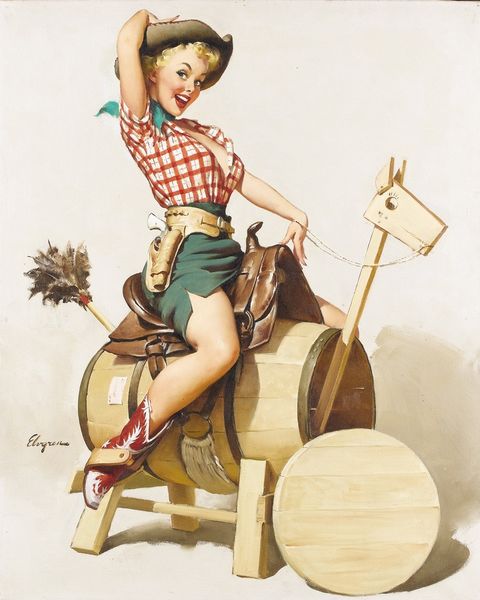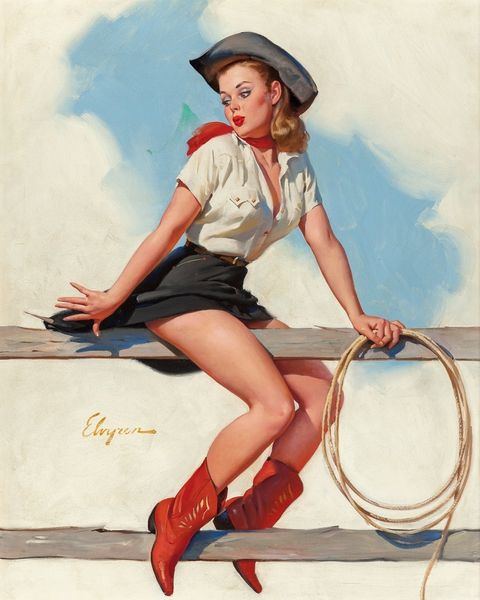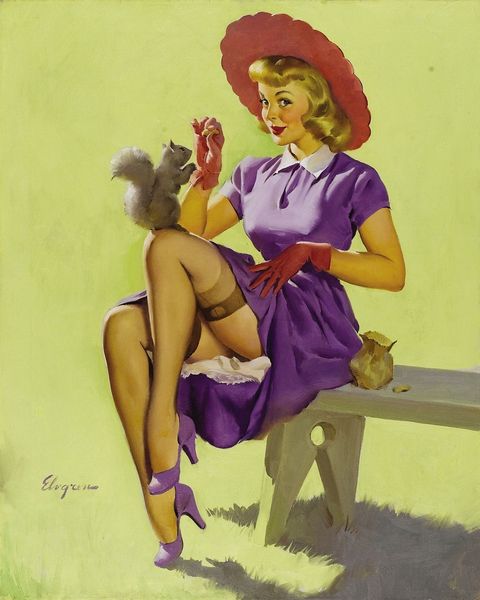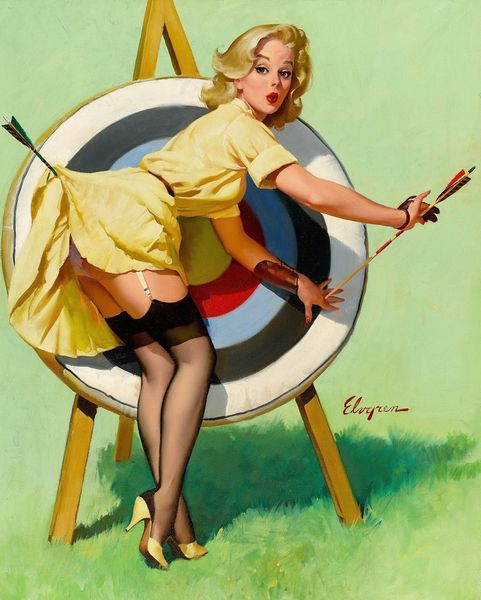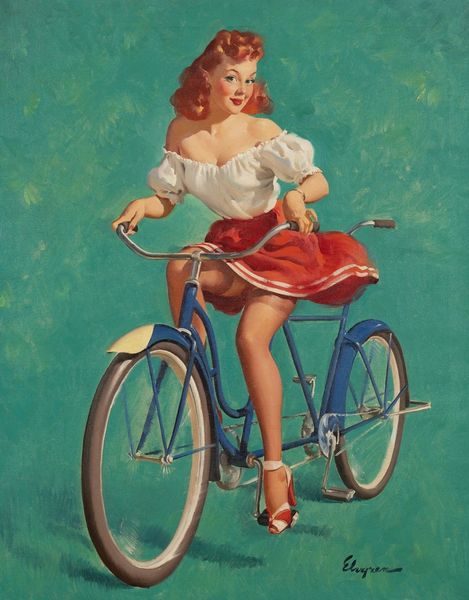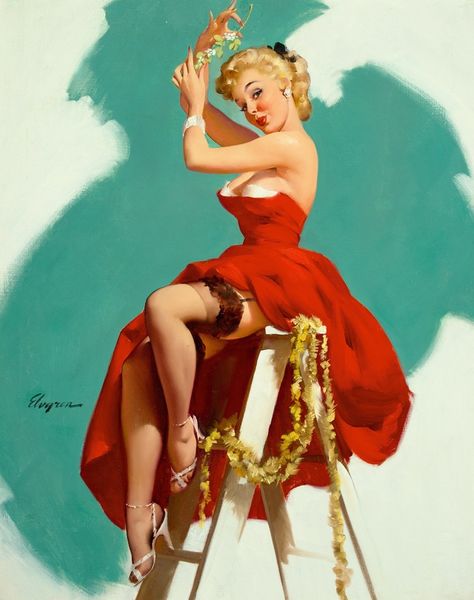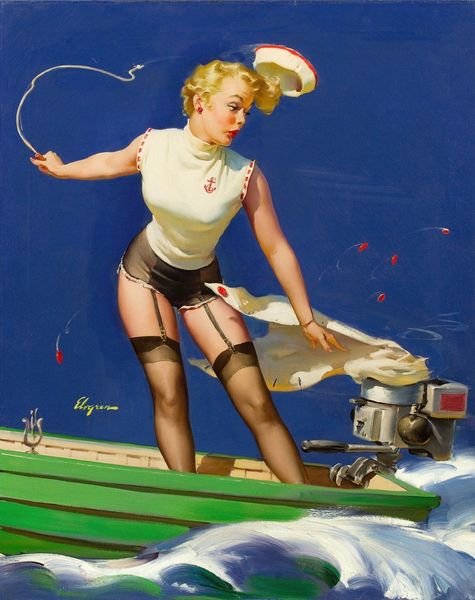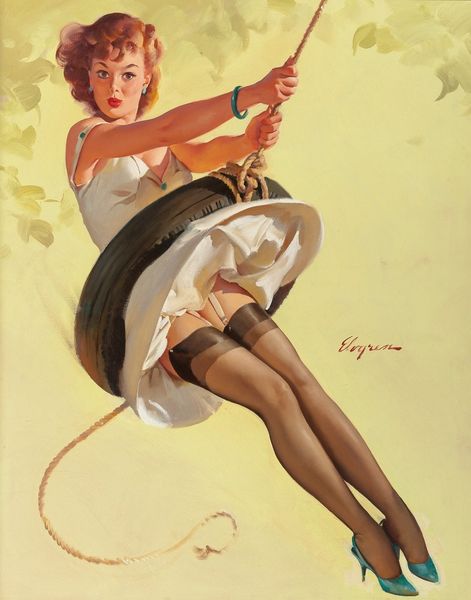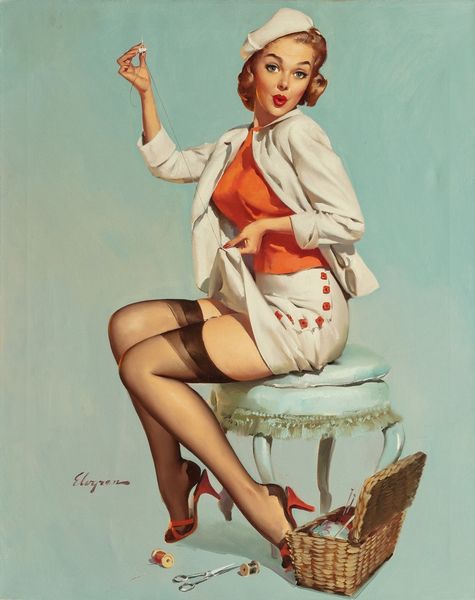
painting, oil-paint
#
portrait
#
painting
#
oil-paint
#
figuration
#
oil painting
#
genre-painting
#
academic-art
Copyright: Modern Artists: Artvee
Curator: This oil painting is titled "Let’s Go Around Together," a 1948 piece by Gil Elvgren. What strikes you first? Editor: The immediate feeling is… frivolous. Almost excessively so. The playful smile, the suggestive peek of stocking, perched atop a carousel horse. There is an almost weaponized femininity. Curator: Indeed. Elvgren, celebrated for his pin-up art, often played with societal expectations of women. The seemingly innocent subject matter serves as a coded commentary on women’s roles in the post-war era. Think of the rise of consumerism. How might she represent the desires of a newly affluent society? Editor: Well, the carousel itself holds layers. In iconography, the circle often symbolizes eternity, or perhaps a more cynical unending cycle. The horse, of course, is traditionally associated with power, but here, it’s a tamed, domesticated symbol of power enjoyed through leisure. Curator: Precisely! This dynamic creates a fascinating tension. While on one hand it seems to uphold conventional beauty standards, on the other, it hints at a subtle disruption of those very standards by claiming ownership of one's own desire. A sense of agency in the artifice. Editor: Do you think the artifice is deliberate? I read it almost as wish fulfillment; the horse never breaks from the fixed, circular path, implying social conventions as shackles, rather than avenues. This is particularly powerful given that the ‘pin up’ format rose to prevalence at a time when the roles of women shifted massively during World War II, before settling once again. Curator: It's the dichotomy between empowerment and entrapment. Her sly look and the somewhat precarious placement of her skirt suggest a certain knowingness, and that speaks to her awareness of the expectations and performance of them. Editor: It's that visual storytelling then, playing with our pre-existing understandings of symbols that grants the work depth. That feeling of understanding encoded into images throughout history; that’s what makes art so timeless. Curator: Absolutely. Recognizing these complexities allows us to consider these types of works beyond mere surface-level appeal, but rather, cultural documents rich in nuanced perspective on a pivotal moment in history.
Comments
No comments
Be the first to comment and join the conversation on the ultimate creative platform.
